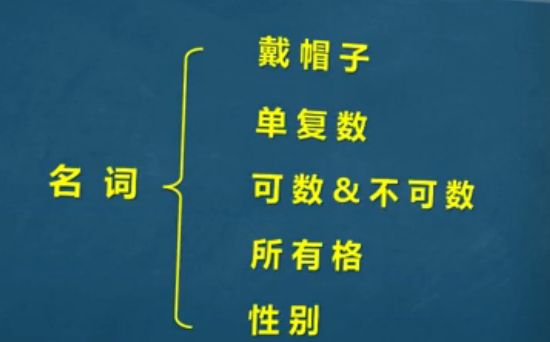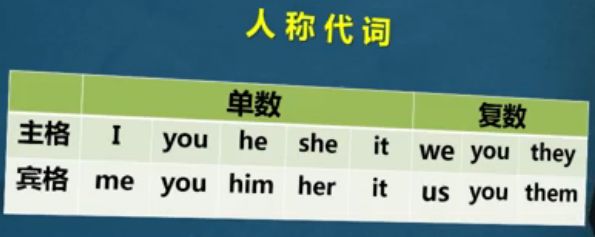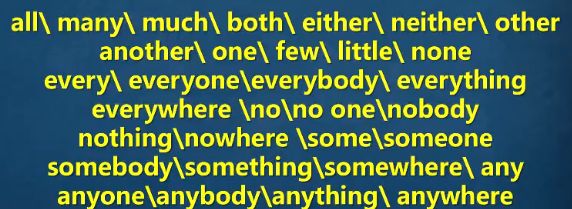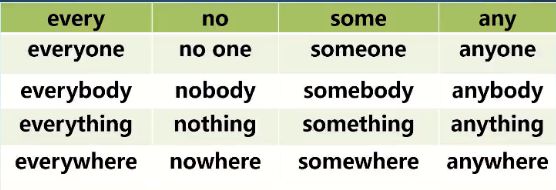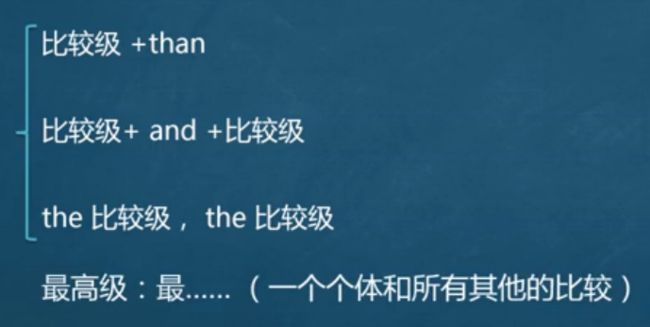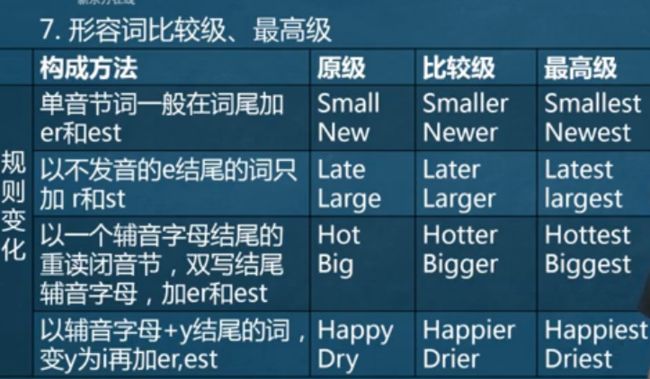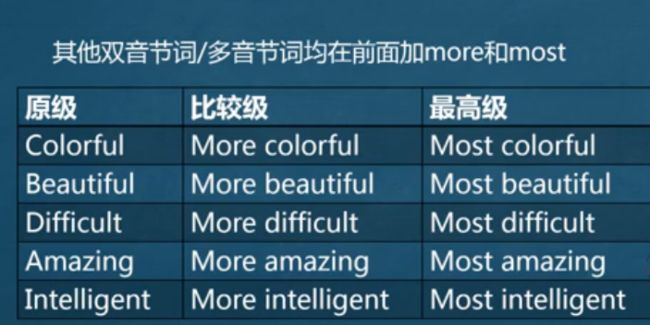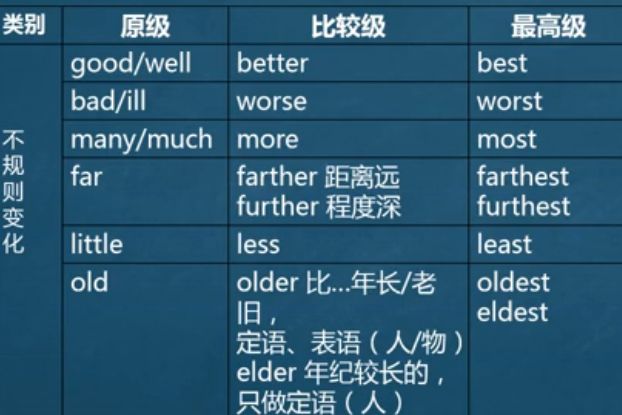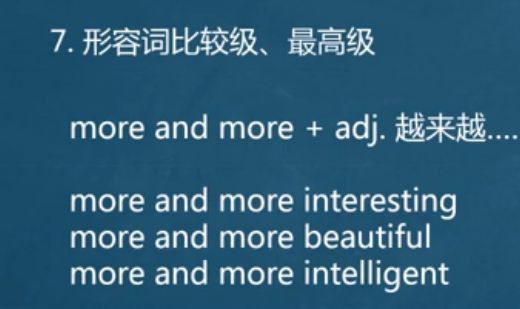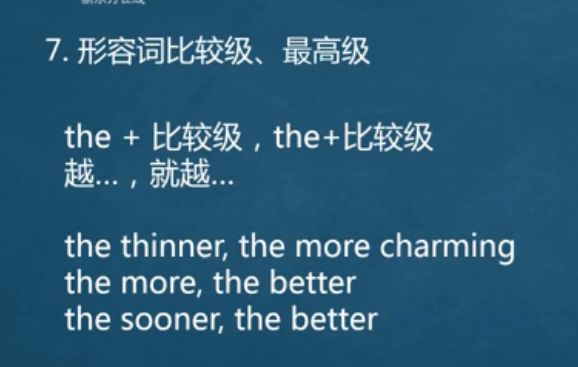前言:
英语语法系统地总结归纳出来的一系列语言规则。英语语法的精髓在于掌握语言的使用。本文主要介绍词性;
名词
在世界上表示人、物、地名这三大类都可以成为名词;
1.名词戴帽子
名词戴帽子就是如果在没有特殊情况下,都需要在名称前 + 冠词(a / an / the / this / that ......)
a gril a station a city
the boy the subway station
that dog
特殊名称前 使用零冠词:
Martin Bei jing Peking University
2.名词的复数形式
汉语用 "们" what else...来表达名称的复数形式,但也不全是,比如你可以说:姑娘们 但不能说 来100个姑娘们;
现在来看一下英文的复数形式
2.0: 一般规则在名称后面加 s
girls womans whores books
2.1:以s/sh/x/ch结尾的名词 后面加 es
a bus --->bues
a brush ----> brushes #brus刷子
a box ----> boxes
a bench----->benches 长凳子 席位
2.2:以f/fe结尾的名词,修改f /fe 为 ves
a wife ------ wives a shelf ------shelves #架子 a knife------ knifves #匕首/到 a leaf ------leaves 树叶
以f/fe结尾 不需要修改 f /fe 为 ves,而是加 s 的 名词
a roof---- roofs #屋顶 a cliff ----cliffs #悬崖 a proof ----proofs #证明 a chief -----chiefs #首领
即可修改 f /fe 为 ves,也可以直接加 s 的名词
a scarf scarfs 或者 scarves #围巾
a handkerchief handkerchiefs 或者handkerchieves #手帕
辅音字母+y结尾,变y为i + es
a baby babies
a lady ladies
a city cities
a country countries
辅音+O结尾,+es
a hero heroes
a potato potatoes
a tomato tomatoes
没有规则的名词复数形式
a sheep sheep #绵羊 a deer deer #鹿 an aircraft aircraft #飞机 a swine swine a fish fish
a man men
a woman women
a tooth teeth #牙齿
a foot feet #脚
a goose geese #鹅
a child children
a mouse mice #鼠标
an ox oxen #公牛
a phenomenon Phenomenona #现象
总结:
为什么英语名词会有不同的复数形式呢?主要是为了发音,以及英语有些单词源自法语,所以会有特殊的复数形式;
3.可数&不可数名词
可数就是可以数的,没有数量的;
液体状的:water/tea/coffee/milf/beer
物质名词:soape/air/chocolate/rice
抽象名词:love/friendship/enthusiasm/happiness/information/
3.1 不可数名称禁忌
A.不可数名词前 一定不要加 a/an
B.前面不可以加 one/two/three这些量词
C.后面不可以加s,永远是单数形式;
3.2 量化不可数名词
虽然不可数名词本身无法数,但是可以通过容器来量化(量词);
a piece of bread #一块面包
a bar of soap #一块香皂
a bottle of ink #一瓶墨水
a cup of coffee #一杯咖啡
a fit of anger #一顿脾气
a spoon of sugar #一勺糖
bar本身就是条、棒的意思,所以一般在描述长条或棒状的物体时用.
piece有片、块、件、部分的意思,在使用时较广泛,很多不可数名词都可以用piece 来描述
There is some bread on table.
I am thirsty.would you bring me some tea,please?
There are two bars of soap in the bathroom.
3.3 有时不可数名词可以转换成可数名词
Do you like tea? Longjing is a well-known tea. #龙井是一种非常出名的茶叶;
The lights are on. #灯都亮了
4.名词所有格
英语名词所有格有两种:'s属格和of属格(相当于中文的)
`s (有生命名词所有格)
Lucy`s friends.
My mother`s bag.
the driver`s phone number.
使用 `s注意事项
如果名词是复数形式,名词所有格 只加 `即可; The teachers` reading-room. The workers` club. The students` association. #学生会
of(无生命名称所有格)
The color of car. #这车的颜色
The name of the song. #这歌的名字
The advantage of the plan. #这个计划的好处
#使用of 一定要倒着说
表示 时间、距离、国家、城市的所有格也用 `s
Today`s newspaper. #今天的报纸
One hours`s drive. #一小时的车程
The country`s plan #国家计划
Beijing`s weather #北京的天气
双重所有格
只要符合 【名词 + of + 名词所有格/名词性物主代词】 结构的句子就是双重所有格;
名词 + of + 名词所有格
莎士比亚的一个喜剧: a play of Shakespeare`s #注意只是其中1个
我爸爸的一个朋友: a friend of my father`s
这位作家的一部小说: a novel of the writer`s
名词 + of + 名词性物主代词
我的一个朋友:a friend of mimne(my).
她的一个外甥: a nephew of hers.
他们的一个女儿:a daughter of theirs.
|
|
形容词性物主代词
|
名词性物主代词
|
|
|
第一人称单数
|
my
|
mine
|
我的
|
|
第二人称单数
|
your
|
yours
|
你的,你们的
|
|
第三人称 单数
|
his,her,its
|
his,hers,its
|
他的,她的,它的
|
|
第一人称 复数
|
our
|
ours
|
我们的
|
|
第二人称复数
|
your
|
yours
|
你们的
|
|
第三人称复数
|
their
|
theirs
|
他们的、她们的、它们的
|
特殊所有格
刘先生、左先生的老婆:Mr.Liu and Mr.Zuo`s wife. (共同所有使用and相连)
刘先生和左先生的女儿:Mr.Liu`s and Mr.Zuo`s daughter. (不同所有,但都有)
5.名词性别
king 国王 ---------- queen 女王(王后) wizard巫师 ----------witch 女巫 bridegroom新朗 --------brige 新娘 cock 公鸡 ------hen母鸡
landlord男房东------landlady包租婆
-ess 表示女
god神----goddess女神
prince王子------princess公主
actor男演员----actress女演员
heir男继承人----heiress女继承人
waiter男服务员------waiteress女服务
冠词
冠词:对名词起 泛指、特指、定量、不定量等限定作用的词,冠词在名词之前起到修饰和限定作用;
1.冠词的分类
A.不定冠词(a / an )
不定冠词用来表示:某类事物中的 其中1个,无论是哪一个?
a:用于以辅音(指发音而不是拼写)开头的单数名词
a book
a university
an:用于以元音(指发音而不是拼写)开头的单数名词
an hour
an apple
B.定冠词 (the)
用于名词之前,表示特指,既某个特定的1人或1事物;
Give me the pen on the desk. #把桌子上的那支笔给我 I love the gril in red. #我喜欢穿红色衣服的那个女孩
Please fill in the form before leaving. #请在离开前填写一下这张表格
C.零冠词
指名词前不带冠词并且能单独使用的情况
表示抽象概念时复数名词、不可数名词 ,专用名词 球类、棋牌、季节、星期、头衔等前使用零冠词,
Dogs are friendly. Teacher are well-respected. #老师是受人尊敬的
Beijing is the capital of china. #北京是中国的首都
D.冠词的应用
1.不定冠词的基本使用
第1次提到某人或者某物(第一次大家都不知道,所以不可以用定冠词 the),起到介绍作用。
A sexy lady wants to see you.
A young man just passed by and wanted to see you.
表示数量 “一个,每一个,任一”
The farmer has an annual output of 30,000 apples. #这个农民 每一年 产出 30,000个苹果;
A squirrel is jumping onto the tree. #1个松鼠刚刚跳到了树上。
表示类指,泛指一类人或事物,用于可数名词前
A girl might be a mystery. #1个女孩就是1个谜团(泛指女孩就是谜团) Where there is will,there is a way. #有志者事竟成
用于某些表示数量的短语中
A couple of years. #很多年
A bunch of flowers. #一束鲜花
不定冠词用于单数名词前表示身份、职业尤其用 作表语或者补足语的名词之前。
She is a businesswoman rather than a housewife. #她是1个女强人,而不是家庭主妇。 He wants to be a teacher when he grows up. #他长大想成为1名老师
用于姓氏前面,表示不确指得某人,也可以指得某家庭成员。(例如:姓左的那个、姓李的那个)
A Liu call you just now. #刚刚 有个姓刘的给你打电话。
His wife is a Collins. #他的妻子是个姓 Collins的。
2.定冠词的基本使用
定冠词可以特指 前面已经提到到某1个人或者事物
The girl in that group won the match. #这个女孩赢得了比赛。 What about the food I recommended last time? #我上次给你推荐的那道菜怎么样?
定冠词用于表示世界上独一无二的事物
The sky. #天空
The sun. #太阳
The equator. #赤道
The earth. #地球
The moon #月亮
注意:如果世界上独一无二的事物,前面有形容词修饰,则可以用不定冠词。
A lovely moon. #一轮可爱的月亮
A full moon. #一轮满月
A red sun. #一轮红日。
定冠词用于单数名词前 表示属于哪个类别? 或者用于某些形容词或分词前(The + 形容词)表示一类人。
The whale is a type of mammal. #鲸鱼属于 哺乳类动物的一种。
The government should make the right descosicon. #政府应该做出正确性的决策。
定冠词可以用于表示方向、方位、时间的名称前面。
at the back. #在后面。 in the east. #在东方。 on the right #在右边 on the way home . #在回家的路上 in the daytime. #在白天
注意:方位词成对使用并构成平行结构时,不需要使用定冠词,使用零冠词。
They travelled to north and south. #他们走南闯北。
在序数词(第1 第2 第几)、形容词、副词(如 “很、颇、极、十分)最高级前面,用定冠词。
The first is better than the second. #第1总比第2好。
Our city is one of the prettiest cities in the china. #我们的城市是中国最美城市之一。
This is the only way to solve the problem. #这是唯一能解决问题的方法。
注意:在一些固定短语中,序数词前可以不用 定冠词 the.
At first sight. #咋眼一看
First of all. #首先
On second thought. #再三考虑
在乐器面前一定要用 定冠词 the
Do you like to play the piano? #你喜欢弹钢琴吗? He is good at playing the violin. #他很会弹小提琴。 注意: 1.当乐器是个实体的时候不使用 定冠词 the。 He bought a piano for his daughter. #他给他女儿买了钢琴。 2.中国传统乐器 不和 定冠词 the连用。 play 二胡
表示姓氏的复数形式前,表示一家人或者一家有时也指夫妻、特定兄弟和姐妹
The Greens are fashionable. #格林一家很时髦。
The Collins are vampires. #克林一家是吸血鬼
表示 山脉、海洋、江河、湖泊、群岛、海峡等名称前使用定冠词 the;
The Alps. #阿尔卑斯山
The Pacific Ocean. #太平洋
The Thames. #泰晤士河
3.零冠词的基本使用
复数、抽象(幸福、爱)、物质(水、空气)名称使用 零冠词;
Dogs and cats are friends of people.(复数)
Love generates power.(抽象)
Water flows to lower places.(物质名称)
人名、地名、季节、月份、星期、节日、三餐、头衔、疾病、语言、学科、颜色、球类、棋类使用零冠词。
Tian`an men Square May Day #五一劳动节 February #二月 Play basketball Play badminton Play chess Purple is my favorite color Spanish is sexy.
形容词前已经有物主代词、指示性代词、名词所有格,不加定冠词;
His best friend is Jim.
This smallest dog is loved by everybody.
两个或者多个形容词 最高级别并列使用时,第1个形容词加 定冠词 the, 但是第2个不要加;
It is biggest and busiest airport os US. #这是美国最大最忙碌的机场。
代词
代词分类5大种类人称代词、物主代词、反身代词、指示代词、不定代词;
人称代词
物主代词
代词 反身代词
指示代词
1.人称代词
英语句子 由 主语 (动作发出者)+ 谓语(动作) +宾语(动作承受着)构成;
人称代词做主语 用主格形式,做宾语 用宾格形式;
主语 谓语 宾语(宾格)
we help them. #我们帮助他们
主语 谓语 宾语(宾格)
they help us. #他们帮助我们
主语 谓语 宾语(宾格)
she knows me.
主语 谓语 宾语(宾格)
I know her.
2.物主代词
A.形容词性物主代词:和形容词功能类似,用来修饰名词;
my umchair
my girl friend
B.名词性物主代词:和名词功能类似,可以 单独拿出来 做 主语 /宾语/ 表语
表语:(主语 + 系动词(am/is/are)+ 表语结构)表语是说明主语的身份、性质、品性、特征和状态的,表语位于系动词之后,与系动词联系十分紧密,有系动词就有表语,有表语就有系动词。通常由名词、形容词、副词、介词短语、不定式、动词的-ing、从句来充当。如果句子的表语也是由一个句子充当的,那么这个充当表语的句子就叫做表语从句,表语就是起表述作用的句子成分。
#以下是名词性物主代词:
My house is expensive. what about yours?
Mine is cheap. Hers expensive too.
bug I love his, the largest one is his.
C. 形容词性物主代词 和 名词性物主代词 做替换;
These are his hobbies. These hobbies is his.
That is our decison. This decison is ours.
D.形容词物主性代词 和 双重所有格。
A friend of mine. #我的1个朋友
A daughter of theirs. #他们的1个女儿
A nephew of her. #她得1个外甥。
3.反身代词
反身代词=....自己
A.反身代词的作用:
反身代词可以做主语、表语、谓语、同位语
He himself is a doctor.
主 同位 系 表
The theory itself is all right. #理论本身是正确的。
同位语
B.动词+反身代词
Help yourself. #您自便
Enjoy yourself. #玩得开心
Express myself. #表达自己
She teacher Herself Englisr. #她自学英语
C.介词+反身代词
by oneself:自己1个人
I will have tea by myself. #我自己1个人喝茶了。
I I learn English by myself. #我自学英语
for oneself:替自己
She made no complaint for herself. #她没有替自己抱怨
between oneself:私下说
Between ourselves, she is a selfish man. #咱私底下说,她是一个自私的人
4.指示带词
A.this / that:单数名词 / 不可数名词
B.these/those:复数名词
C.such a: 单数名词
D.such:不可数名词、名词复数形式
This is my watch. These are their watches.
That is my dress.
Thoese are our dresses.
We had such a busy day. #我们有 如此忙碌的一天
Web have had such busy days. #have had曾经 #such 这样的、如此
注意:中文习惯用这。比如 (就到这把。这算他娘的什么事情?)而英语习惯用 that
That`s all. #就到这里吧(那是全部了)
That`s ok. #这没什么
That`s all right. #这都不足挂齿
That`s all I want to tell you. #这是我想要告诉你的。
5.不定代词
1.表示和 "二" 相关的代词(Both/Either/Neither)
A.both #两者都...
做主语:
Both will be here. #你们都会在那里。
Either will be here. #有1个会在那里。
Neither will be here. #两个都要不会在那里。
做宾语
I will take both with me. #我将把两个都带走
I will take either with me. #我将带走其中1个
I will take neiher with me. #我1个也不带走
做定语
定语是用来修饰、限定、说明名词或代词的品质与特征的。定语汉语中常用‘……的’表示。
定语从句,一个句子跟在一名词或代词(先行词)后进行修饰限定,就叫做定语从句
Both seats are taken.#两个座位都被占了 (Both 修饰 名词 seats) #take seat 就座
You may take either seat. #你做哪个座位都可以。
做同位语
同位语:就是两个词相互解释,可以拿掉任何一个。
I loeve you both. #我爱你们
They both agree to stay. #他们都同意留下了
2.表示全部的代词 (all)
A.做主语
All of us are fond of sport. #all of us are fond of.... #我们都喜欢......
B.做宾语
I want all of you to make progress. #我希望你们每个人都 可以取得进步。 (make progress 取得进步)
C.做定语
All roads lead to Rome. #条条大路通罗马 (lead to 导致;把…带到;领到;(道路)通向)
D.做同位语
She knows us all. #他认识我们所有人
3.代表“每个”的代词(every one/ each)
every和each的区别:every更加强调整体,each更加强调个体
Hellow everyone. #大家好
Everything is quit. #一切都很安静
A houmorous person is accepted everywhere.#幽默的人到哪里都是受欢迎的
Each student has got an English name. #每个学生都有一个英文名字
every + n (单数名词)
each + n (单数)
each of n(复数形式) each of them #他们当中的每个人
Each of 做代词
Each of my children goes to different schools. #我的每个孩子去不同的学校。
Each of the tickets costs 10 dollars. #每张门票花费 10美元
Every/Each man is not honest. #每个人都是不诚实的。
4.代表 没有1个/都不....: no/none
A.no、none的相互转换
no + 名词 = none I have no friend in HongKang = T have none in HongKang
B.none of +名词
None of us are perfect. #我们都不是十全十美的。
None of them like it. #他们都不喜欢它。
None of girls have been to the great wall.#没有一个女孩去过长城。
5.代表 一些 some/any
A.some/any +复数/不可数名词
some + 复数/不可数名词 用在肯定句
There are some scenic spots around the city. #城市附近有几处风景区。
any + 复数/不可数名词 用在否定 & 疑问句
Do you need any reference books? #你需要一些参考书吗?
B.some/any + 单数 名词
some + 单数名词 = 某一个人
You will regret it some day. #总有一天你会后悔的。
注意:some也可用在请求、建议的疑问句中
Would you like some beer? #您想要一些啤酒吗?
Why didn`t you buy some sweets? #您为什么不买些糖果呢?
can /could / would 的区别?
can you do(你能做到吗)
could you do(更礼貌点,请做....)
would you do(更礼貌点)
any + 单数名词 = 任一
You can buy it in any store. #你可以买到它,在任意商店。
6.表示 另外 other
A.other + 单数/复数名词
Do you have any other question/questions? #你们还 有没有其他问题了?
There are no others. #没有别的了。
B.the other/ another
the other + 单数/复数名词,范围为二
I have two daughters. one is a nurse the other is a worker.
another +单数名词 ,范围为3个以上
I don`t like this one. please show me another.
7.表示多&少
8.合成不定代词
合成不定代词转换:
noting = not anything I did noting yesterday. = I didn`t do anything yesterday.
nobody = not anybody
I meet nobody = I didn`t meet anybody.
no where = not anywhere
I went nowhere = I didn`t go anywhere.
扩充:
somebody 不是SB的意思,具有大人物的意思。
I will become somebody ! #我会成为1个大人物。
nobody 具有无名小卒的意思
He was nobody at that time. #那时他只是1个无名小卒
形容词(adjective)
1.定义
形容词就是用来修饰名词、说明事物或人的性质特征的词汇
作用:限定、描述、修饰名词或者其他代词的 一类词
2.分类
性质性形容词 和叙述形容词
简单形容词和复合形容词
A.性质形容词
直接说明事物的性质或者特征的形容词。
它有级的变化,可以用程度副词修饰;
在句子中可以做 定语、表语、补语
例如:hot
I want some hot water #做定语
The water is hot. #做表语 表语:一般跟在 be动词后面,构成 主语 + be动词 + 表语 结构。
She find the water very hot. #做补语
B.叙述形容词
叙述形容词又称表语形容词,只能做表语;
这类形容词没有级的变化。
可以不要程度副词修饰。
alike、alive、alone、asleep、avake
例如:asleep 睡着的
Shi is an asleep girl.(错误) The girl is asleep.(正确) #只能 跟在be动词后面做表语;
C.简单形容词
构成方式:
不带前缀或者后缀:good、round、pretty、nice
带前缀或者后缀:illegal、interesting、wonderful
illegal是不合法的意思,它的原型是legal合法的。
interesting 是感兴趣的意思,它的原型是interset兴趣、利益
wonderful 是美好的/精彩的,它的原型是wonder 好奇、惊讶、有趣
D.复合形容词
复合形容词的构成:
形容词 + 形容词 / 现在分词 / 过去分词 / 名词 +ed
名词 + 形容词 / 现在分词 / 过去分词 / 名词 +ed
数词 + 名词(单数) + 形容词
Light-blue/red/green #浅蓝色
Good-looking #好看的
Well-handled #处理得不错、拿捏的很有分寸
Low-quality #质量差的
Open-minded #思想开放、灵活的
World-wide #世界闻名的
Time-saving #省时间的、高效的
Hand-made #手工的
Stone-hearted #铁石心肠的
Five-month-old #五个月大的
3.形容词的功能
A.作定语
Diligent students will always have good results. #勤奋的学生总会有好成绩的。
B.做表语
she is awake for 10 hours. #她已经10个小时没休息了。
C.做状语
状语,则是用来修饰一种动作.可以用来表征这个动作发生的时间,地点等,一次分为时间状语,地点状语等.
The girl sits at the corner,silent. #那个女孩坐在角落里,一言不发。
D.做补语
补语是 对谓语的 补充说明;
She found the river dry. #她发现河水变干了。
4.形容词用法
A. the + 形容词 表示一类人
The dead #去世的人
The living #活着的人
The rich #富人
The poor #穷人
The blind #盲人
The hungry #饥饿的人
B. The + 国籍/民族/种族等形容词,表示这个民族的整体。
The British #英国人
The French #法国人
The Chinese #中国人/炎黄子孙
C.多个形容词 修饰1个中心词时,顺序如何把握?
限定词---》数词----》描绘词(大小、长短、形状、新旧、颜色)---》出处---》材料性质---》类别---》中心词
A big round desk. #1个大而圆的课桌
The third expensive race car. #世界第三昂贵 的赛车。
A big new living room. #1个既大又新的客厅
A famous German medical school. #德国著名医学院
E.形容人物特点的形容词
optimistic #乐观的
Sally is such an optimistic girl that she could always pass on her passion of life to other.#莎丽是一个乐观的女孩,她总是把自己对生活的热情传递给别人。
helpful #乐于助人的
You might think that you are being helpful,but actually you are doing harm to (对谁来说有伤害)little kids.#你可能认为你在帮助孩子,但实际上你在伤害小孩子。
honest #诚实的
We nust be honest about what we do not know.#我们对自己所不知道的事要诚实。
patient #耐心的/病人
You have to(不得不) be patient if you wanna(wanna是want to的简写) become a photographer. #如果你想成为一名摄影师,你必须要有耐心。
modest #谦虚的
Be modest,or you will lag behind. #要谦虚,否则你会落后的。
Stay hungry,stay foolish. #求知若饥,虚怀若愚。
responsible #有责任心的
Our cultural background may have influenced who we are,but we are responsible for(对谁负责) who we become.#我们的文化背景可能影响了我们是谁,我们要对我们未来成为谁负责。
selfish 自私的
You cannot be so selfish.you have to care about the environment.#你不能如此自私,你必须关心环境。
passive 消极的被动的
People always tend to be passive or keep quite, but what we need is the courage to debate.#人们总是倾向于被动或保持冷静,但我们需要的是敢于辩论的勇气。
形容心情
satisfy #+ed 感到惊奇/ +ing 令人惊讶的
I am satisfied with your work. #我对你的工作很满意的
Your work is satisfy. #你的工作令人满意的
surprised/surprising #+ed 感到惊奇/ +ing 令人惊讶的
I am surprised with the beauty`s English. #这个美女的英语另我感到惊讶
The beauty`s English is surprising. #这个美女的英语是令人惊讶的
frightened/frightening #原型fright感到害怕 +ed 感到害怕的/ +ing 令人害怕的
The little girl was frightened by the earthquake.#小女孩被地震吓坏了
The earthquake is frightening. #这场地震让可怕的。
annoyed / annoying # + ed 感到气愤的, +ing 令人气愤的
The boss is annoyed with staff`s mistakes. #老板感到很气愤,因为员工的错误。
The s.taf`s misstakes are really annoying #员工的错误令人气愤
5.形容词的比较级和最高级
副词
1.副词概念
定义:副词是用来 修饰动词、形容、其他副词、分词、介词短语、整个句子。
作用:说明时间、地点、程度、方式等概念的词;
副词和形容词的区别:形容词表示某一事物或的特征, 副词表示某一动作的特征。
2.副词的分类
按照词义划分:时间、地点、方式、程度、疑问、连接、关系、句子、频率副词。
A.时间副词
now #现在
recently #最近
then #然后、那么
today #今天
tomorrow #明天
tonight #今晚
yesterday#昨天
B.地点副词
anywhere #任何地方
away #离开、遥远
behind #后面
everywhere #每个地方
here #这里
inside #内部
outside #外部
there #那里 、在那个地方
C.方式副词
calmly #镇静的、冷静地
politely #有礼貌地
properly #适当地
proudly #骄傲地
suddenly #突然地
D.程度副词
positively #积极地 fairly #相当地 nearly #几乎地 only #仅仅地 quite #安静的 rather #相当地 simply #简单地/朴素地 totally #完全地 truly #真正地
E.疑问副词
when #询问时间 how #询问方式 where #询问地方 why #询问原因
F.连接副词(表示连接逻辑关系)
however #然而
meanwhile #同时
therefore #因此
nevertheless #不过
G.关系副词
when where why
H.句子副词
absurdly #荒谬地
admittedly #无可否认地
fortunately #幸运地
frankly #坦率地
3.副词的功能和特点
A.做状语(副词具有修饰 动词的功能,那么它肯定可以用来做状语了)
She sings quite well. #她唱得相当好。
He got up rather late. #他起得很晚。
B.做表语
Are you upstairs? #你在楼上吗?
Anyone on downstairs? #有人在楼下吗?
C.做定语
The young girls here are all my students. #这里的小女孩都是我的学生!
The birds there are from the south of china. #那里的鸟儿来自中国南方!
D.宾语补足语
Put the clothes back to the closet after taking them off.
